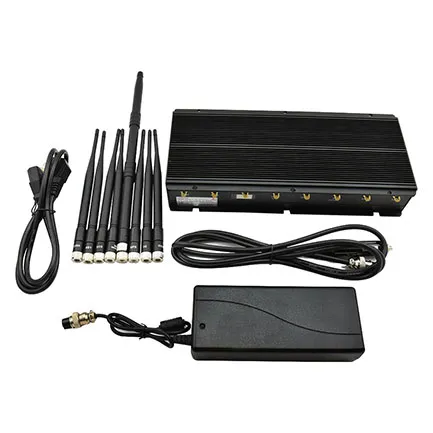Most customers are familiar with links and communication devices, but less familiar with the concepts of interference and the device itself. Therefore, they do not understand why there is no “simple“ or single answer to this question. Obviously, the signal jammer is not linked to the victim, but we can analyze the interaction as we would observe a normal communication link between two “partners.“

In general, we can say that the communication link has only one dimension to compute (TX-> RX), and for the blocking case, two dimensions (TX-> RX and jammer -> RX) need to be computed and then compared. The “link“ that will present a stronger signal at the receiver input will dominate; It can be a transmitter (“ partner “) or a blocker. To better explain this problem, we will first try to explain the basic concept of communication blocking.
AGPS jammers interrupts a communication link (or network) between two (or more) partners; When they try to talk to each other or pass certain data between them, even if a communication link occurs between the drone and its operator is a special case, unlike many others. We can try to block communication between the cell phone and the base station, between the two tactical radios, between the pump and the remote control used to activate it, etc. To block, the jammer emits RF energy (CW + modulation) at the same frequency as the enemy link or network. The enemy receiver (the “listening“ party) will receive the blocker transmission and the “partner“ transmission. A stronger will prevails; If the power of the blocker is greater than the power of the partner, the listener will not understand the message/data correctly. Alternatively, if the power of the “partner“ is greater than the power of the blocker, the listener may be able to understand the message/data correctly and the communication link between the partners should continue uninterrupted.
This explanation is a bit superficial and aims to simplify things. However, if we try to delve deeper into this problem, we can insert more parameters to compare the signal levels of the two links. An example is the SNR(signal to noise ratio) that the receiver “sees“ in its input. Sometimes the interference signal reaching the receiver input may be smaller than the communication signal (the “partner“) and still prevail. This usually happens because the receiver needs some margin between the two signals at the input in order to be able to interpret one (usually the strong one). Do you need to purchase a powerful jammer kit? Welcome here and get the right size jammer for your use. Here www.perfectjammer.com you can get what you need.